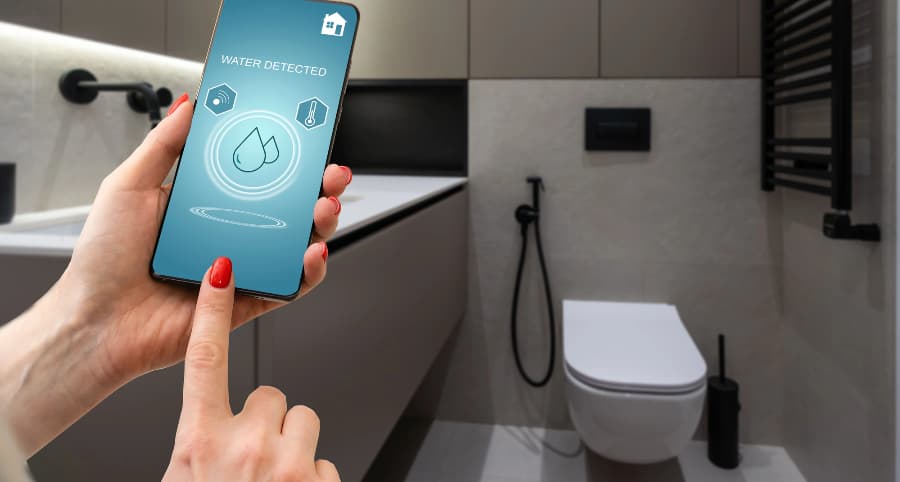How does a water sensor work and why install one with your Santa Fe smart home?

One tiny leak in your home can lead to major problems and thousands in damage. You must defend against this risk; luckily, there’s an easy way to do so. A water sensor is a simple, effective, and budget-friendly solution. See how they work and why you should incorporate water sensors into your Santa Fe smart home.
How water sensors safeguard Santa Fe homes
Water infiltrates homes in many ways, whether from a broken appliance, plumbing issue, weather-related incident, or simple human error. No matter how it occurs, you need to know immediately, and this is why water sensors are important. But how precisely do they work?
The majority of water sensors are conductive and operate with two electrodes. When water comes in contact with the electrodes, an electrical circuit is formed, activating your alarm. You’ll also find capacitive sensors that emit an electrical field. Your alarm activates when water reaches the conductive surfaces of these sensors and disrupts the field. Optical sensors employing infrared LED light are another choice.
Some water sensors give you more
Some innovative water sensors give you even more peace of mind as they feature built-in temperature sensors. This is an excellent feature in preventing frozen pipes. If there’s an extreme decrease in temperature, you’ll know at once. Taking steps before pipes break will shield you from water infiltration and costly repairs.
Why integrate water sensors into your Santa Fe smart home?
When water emergencies happen, you need to be warned right away. You can attain this aim by connecting water sensors to your smart home. Whether you’re on site to hear the alarm or not, you’ll be sent an immediate notification on your cell phone. In addition, your round-the-clock monitoring specialists will be alerted. Each second matters in a water emergency to minimize the destruction and interruption to your family.
Where should you put water sensors?
Any spot at risk of flooding is an appropriate position for water sensors. Place them in these spots:
- Bathrooms: Position next to tubs or in back of toilets.
- Basements: Water often seeps into basements via leaky walls or as a result of excessive rain or faulty sump pumps.
- Next to water heaters or appliances: Any water-using appliance may over time leak.
- Below sinks: Water sensors are perfect for identifying pipe leaks in place not easy to see.
- Attics: Detect roof leaks promptly and avert costly repairs.
Get water sensors with your Vivint smart home
Give your property the complete protection it needs with modern tools from Vivint. Our water sensors in Santa Fe connect to your Vivint smartphone app to deliver instant updates any time your alarm goes off. You also enjoy integrated temperature sensors to prevent pipe freezing. Learn more about the smart home components available in Santa Fe by dialing (505) 605-2552 today.
